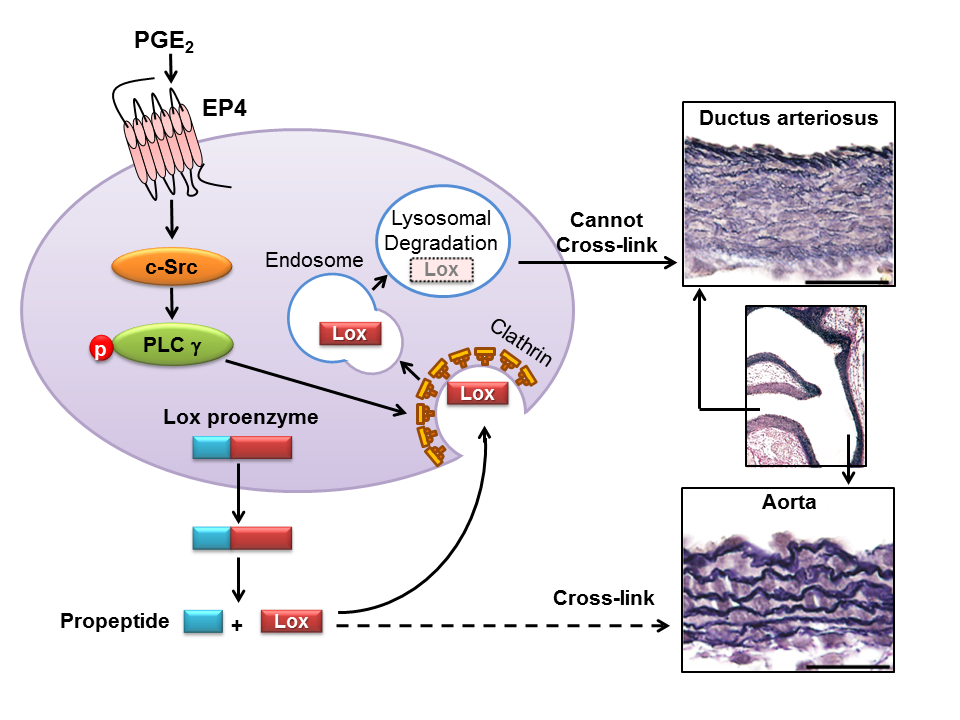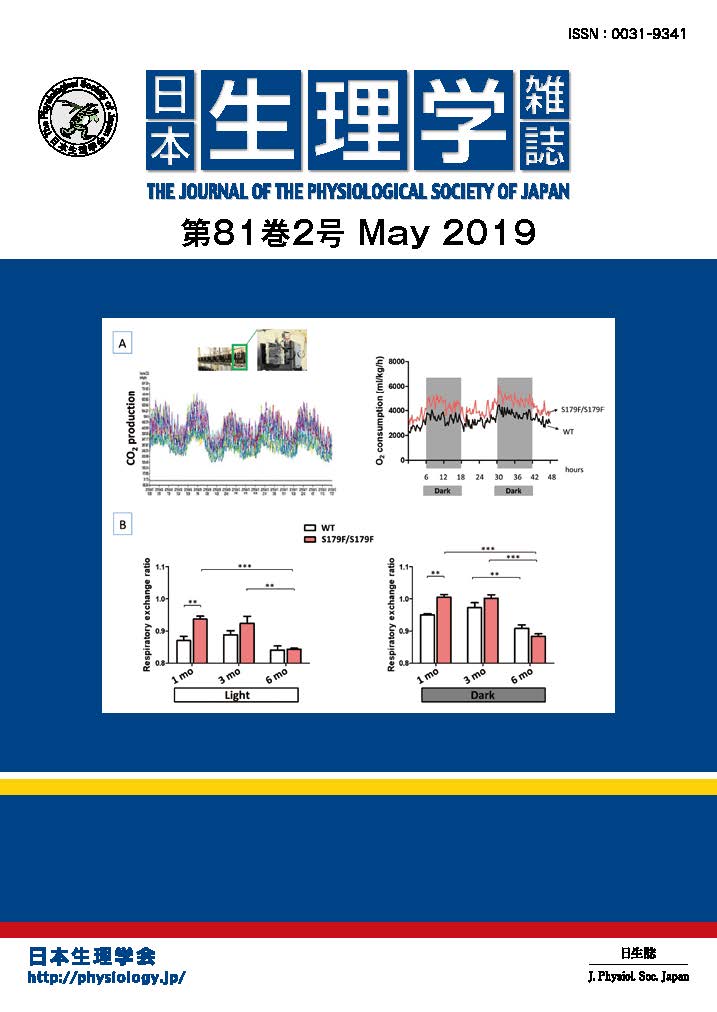The ductus arteriosus (DA), a fetal bypass artery between the aorta and the pulmonary artery, closes immediately after birth. Both vascular contraction and remodeling, i.e., intimal thickening, are required for complete anatomical closure of the DA. Athtough the DA and its connecting elastic arteries, i.e., the descending aorta and the main pulmonary trunk, are exposed to essentially the same mechanical forces and hemodynamics, decreased elastogengesis is known as a hallmark of DA remodeling and is thought to contribute to intimal thickening of the DA. However, the molecular mechanisms of decreased elastogenesis are not fully understood. Here we show that prostaglandin E2(PGE2) receptor EP4 signaling promotes degradation of the mature lysyl oxidase (LOX) protein, a cross-linking enzyme for elastic fibers, only in the DA, leading to decreased elastogenesis. The newly recognized PGE-EP4-c-Src-PLCg-signaling pathway contributes to the lysosomal degradation of LOX. Based on these data, it appears that PGE-EP4 signaling that is the most potent vasodilator of the DA also plays an essential role in DA remodeling. Activation of the c-Src-PLCg signaling pathway may be an additional strategy to promote anatomical closure of the immature DA. Our data also suggest that PGE-EP4 signaling may contribute to pathogenesis of the degradation of vascular elastic fibers such as aortic aneurysm and atherosclerosis.
Yokoyama U, et al. Prostaglandin E2 Inhibits Elastogenesis in the Ductus Arteriosus via EP4 Signaling. Circulation. 129(4):487-96 , 2013
Cardiovascular Research Institute, Yokohama City University

























